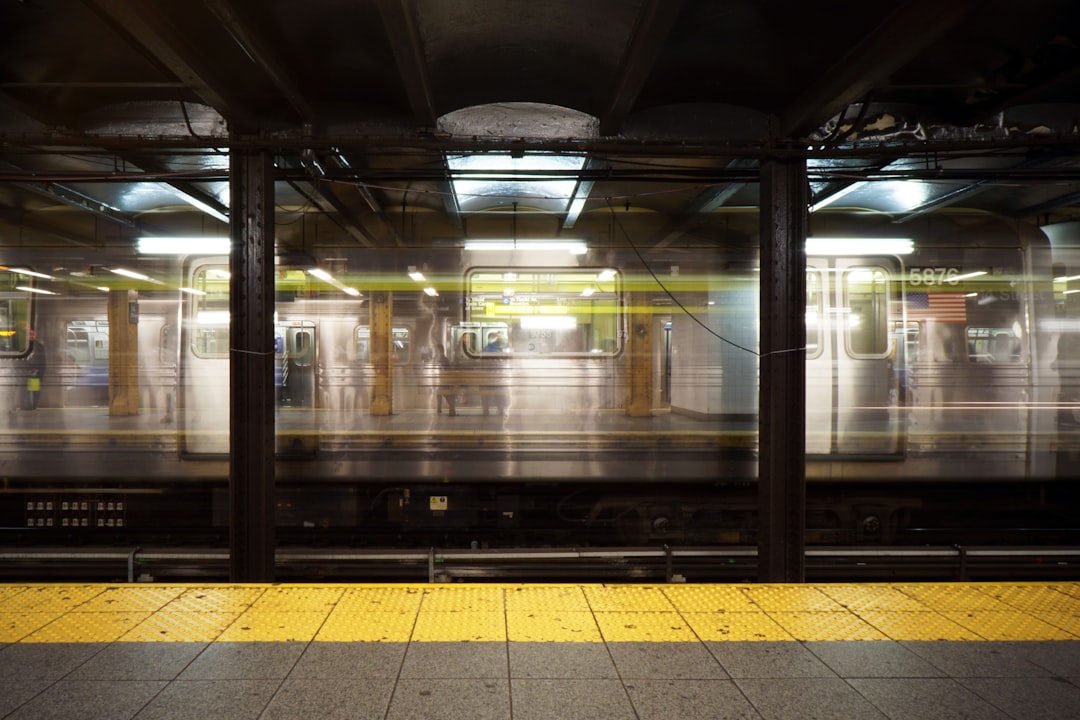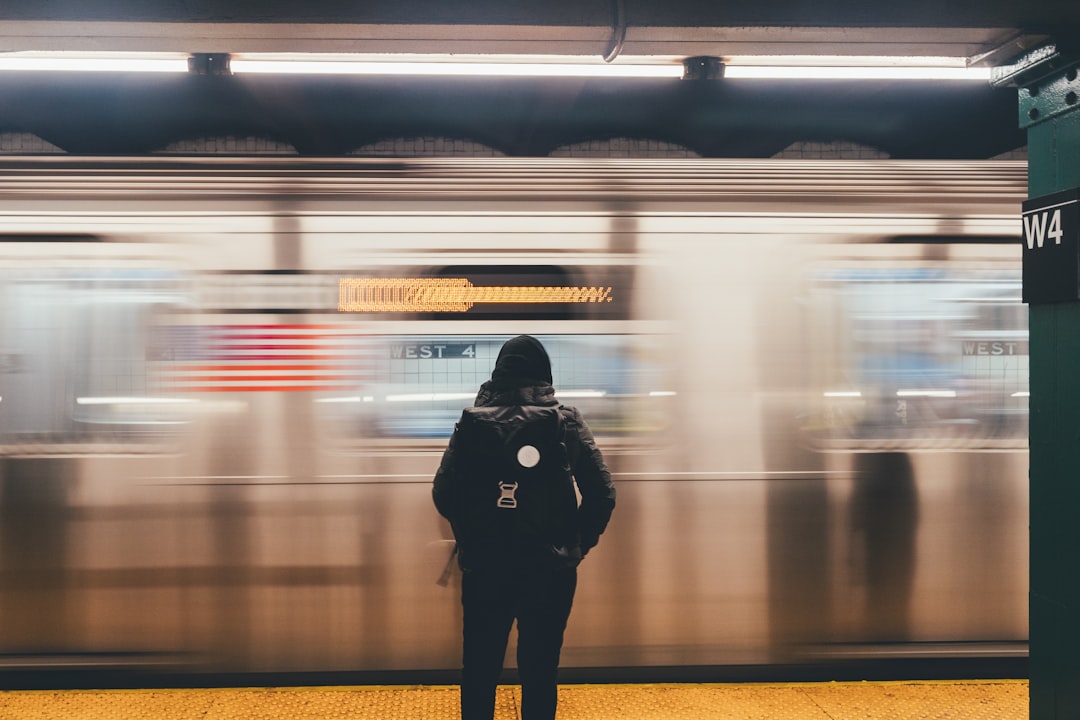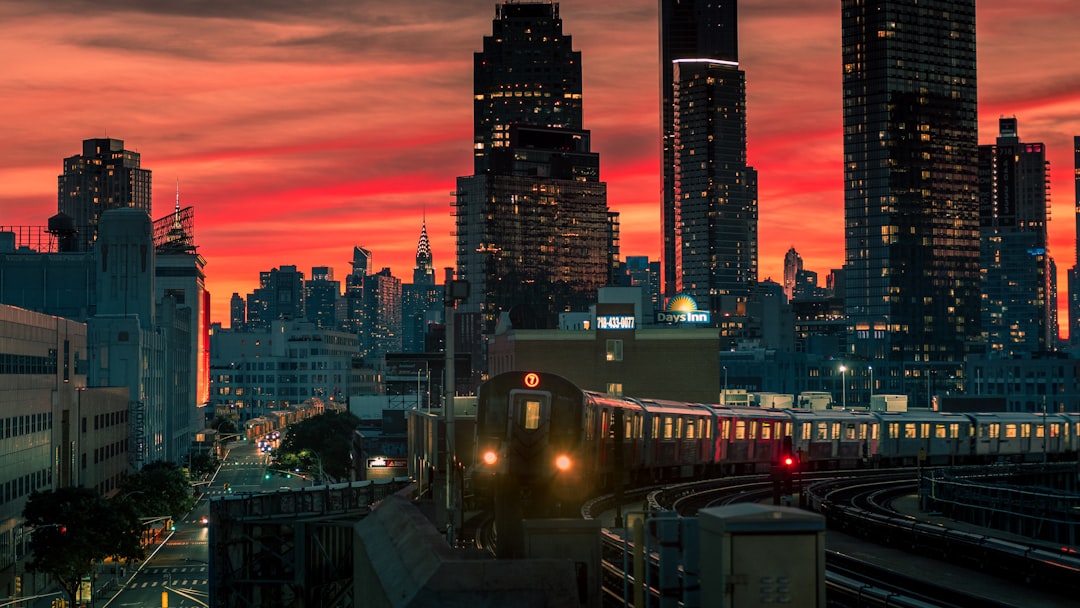Riding the Rocket: A Beginner’s Guide to Toronto’s TTC Transit System
Riding the Rocket: A Beginner's Guide to Toronto's TTC Transit System - Navigating the Massive Network

With over 80 subway stations, 140 bus routes, and 11 streetcar lines, the Toronto Transit Commission (TTC) has one of the largest and most complex public transportation networks in North America. For first-time riders, the sheer size of the system can seem daunting. However, learning to navigate the TTC is much simpler than it appears.
The key is getting comfortable with the subway, as the trains provide the backbone of the entire network. The TTC has just two main subway lines - the Yonge-University line (Line 1) and the Bloor-Danforth line (Line 2). These two lines intersect at one central hub - St. George Station. This station connects Line 1 running north-south with Line 2 running east-west.
During my first rides on the TTC, I just focused on these two main subway lines. I would pick a stop, then follow the signs and maps to my destination. After a few trips, I started to get a feel for how the grid-like subway system is laid out. I realized that as long as I knew which line and direction I needed, getting around was a breeze.
The TTC has also made improvements in recent years to help manage crowds and ease navigation. When entering a station, electronic signs now clearly indicate which platform is for each train arrival. Platforms also have illuminated maps that show the entire system, making it easy to orient yourself no matter where you are.
While the subway is the fastest way to get around, the buses and streetcars help fill in the gaps. These are particularly useful for reaching neighborhoods not served by the subway lines. Though the bus network appears complex on a map, specific routes are clearly marked on every vehicle. I found that a bit of pre-planning was helpful before hopping on a bus. Using a route map or the helpful Trip Planner on the TTC website, I could figure out which bus line would take me where I needed to go.
What else is in this post?
- Riding the Rocket: A Beginner's Guide to Toronto's TTC Transit System - Navigating the Massive Network
- Riding the Rocket: A Beginner's Guide to Toronto's TTC Transit System - Paying Your Way: Fares and Passes
- Riding the Rocket: A Beginner's Guide to Toronto's TTC Transit System - Riding the Rocket: A Look at the Subway
- Riding the Rocket: A Beginner's Guide to Toronto's TTC Transit System - Above Ground: Buses and Streetcars
- Riding the Rocket: A Beginner's Guide to Toronto's TTC Transit System - Places to Go: Top Destinations Accessible by TTC
- Riding the Rocket: A Beginner's Guide to Toronto's TTC Transit System - Etiquette and Safety Tips for Riders
- Riding the Rocket: A Beginner's Guide to Toronto's TTC Transit System - The Future: Expansion Plans and New Technologies
- Riding the Rocket: A Beginner's Guide to Toronto's TTC Transit System - Getting Help: Customer Service for New Riders
Riding the Rocket: A Beginner's Guide to Toronto's TTC Transit System - Paying Your Way: Fares and Passes

When it comes to paying your way on the TTC, you have options. Understanding the fare structure and pass options will ensure you get the best value for your travel needs.
The TTC uses a flat fare system for all subway, bus and streetcar trips. The cash fare is $3.25 per ride, which includes unlimited stops and transfers within a 2 hour window. While convenient for occasional riders, this adds up quickly. Frequent users will save money by purchasing fares and passes.
PRESTO is the TTC's reloadable fare card, similar to London's Oyster or New York's MetroCard. Simply tap your PRESTO card on a station reader upon entering and exiting. The card deducts the correct fare and any transfers are free within the 2 hour limit. PRESTO fares are discounted compared to cash, costing just $3 per ride.
For unlimited travel, a PRESTO day pass is $13 and a week pass is $43. These provide excellent value if you'll be hopping on and off TTC vehicles frequently. Just remember to tap your PRESTO card when starting and ending travel so the pass is properly activated.
Metropass is another convenient option, providing unlimited travel for a calendar month. Prices range from $128-$151 based on zone, offering big savings for heavy users. Monthly passes can be loaded onto a PRESTO card or purchased as a traditional sticker pass.
PRESTO cards are available online, at station vending machines, some retailers and the TTC Head Office. You'll pay a $6 deposit, but this is refunded if you return the card. Registering your card links it to your account, allowing you to easily reload or replace it if lost or stolen.
Students can take advantage of reduced fares. The Post-Secondary metropass offers unlimited monthly travel for $128, while seniors age 65+ ride for just $2.25 per trip using PRESTO. Children 12 and under always travel free!
Riding the Rocket: A Beginner's Guide to Toronto's TTC Transit System - Riding the Rocket: A Look at the Subway

The TTC subway is the beating heart of Toronto's transportation network, carrying over 1.7 million riders per day across its many underground arteries. For visitors and new Torontonians alike, mastering the subway is a milestone achievement and unlocks the keys to seamlessly navigating Canada's largest city.
Luckily, the TTC has crafted its subway system to be as rider-friendly as possible. The trains themselves are clean, comfortable, and keep to rigorous schedules. Large windows allow riders to soak up views of murals, mosaics, and flashes of daylight when briefly emerging above ground. Intercom announcements clearly state upcoming stations, while wall maps inside every car trace the train's route.
Despite the labyrinth of underground tunnels, TTC stations are designed for intuitive navigation. Brightly illuminated signs hanging over each platform clearly display the train destination and arrival times. Tactile yellow strips along platform edges provide a warning zone for the visually impaired. Escalators quickly whisk riders up to street level, supplementing stairwells and elevators.
Art and architecture further enhance the subway environment. Every station has its own unique aesthetic, from the cathedral-like arches at St. Patrick to the undulating color splashes of Pape. Whimsical sculptures liven platforms, while intricate tile mosaics reflect local history. A few stations even house public art galleries.
Speaking with fellow riders about their subway stories, a few themes emerged. Many fondly recalled their first ride as newcomers to the city - a mixture of marvel, moments of confusion, and a sense of initiation. Others recounted how the subway shrinks Toronto by linking far-flung neighborhoods into one community. Parents spoke of weekend family adventures traveling to destinations like the Toronto Zoo and Ontario Science Centre thanks to the subway's reach.
Riding the Rocket: A Beginner's Guide to Toronto's TTC Transit System - Above Ground: Buses and Streetcars
Though the subway may get all the hype, the TTC’s buses and streetcars are equally important in connecting this sprawling metropolis. While subways whisk riders across long distances underground, surface routes fill in the local gaps. These vehicles nimbly navigate neighborhood streets above ground, providing the crucial last leg of many commutes.
Buses offer advantages of flexibility and route customization. As Toronto grows, buses can quickly be deployed to serve new neighborhoods or meet shifting demands. Routes are direct and customizeable in ways rigid subway tracks can never match. This adaptability ensures affordable transit access across the entire city.
What the classic streetcars lack in flexibility, they make up for in charm. Clanging along busy avenues, streetcars have become icons of Toronto life. Unlike most North American cities, Toronto never abandoned its streetcars. Today they’ve been modernized while retaining their retro styles. Step aboard one of the cherry-red trams and enjoy the connection to Toronto’s past.
I spoke with commuters who enthusiastically sang the praises of surface routes. Buses excel at serving suburbs, industrial areas, and other regions beyond the subway’s reach. Streetcars shine at short inner-city hops between downtown attractions. Riders particularly valued the “last mile” connections the TTC’s above ground network provides. Subways and buses seamlessly integrate through organized transfer points, creating easy access across Toronto.
For many daily commutes, a multi-modal path works best. Subway to bus, bus to streetcar, streetcar to subway – seasoned Torontonians adeptly combine the system’s offerings into custom routes matching their needs. Though trips may involve multiple vehicles, the universal fare structure and timed transfers between TTC services facilitate easy transfers. This high degree of route integration is a real asset.
Riding the Rocket: A Beginner's Guide to Toronto's TTC Transit System - Places to Go: Top Destinations Accessible by TTC
As tempting as it may be to simply plant yourself on a sunny patio with a craft beer, Toronto offers far more than food and nightlife. One of the TTC’s greatest assets is its ability to whisk riders across town to world-class cultural attractions, educational destinations, and urban green spaces.
Art lovers illuminated when describing journeys to Gallery of Ontario, the TTC-accessible home to over 95,000 works spanning millennia. The airy galleries, rotating exhibitions, and sculpture garden offer a welcome escape from busy downtown. Parents enthusiastically recounted taking the subway then bus or streetcar to reach Ontario Science Centre at the city’s northern edge. This interactive museum offers labs, demos, and exhibits to spark scientific curiosity in all ages.
The TTC’s reach also extends outdoors to Toronto’s oases of urban wilderness. High Park provides 399 acres of forests, trails, sports fields and gardens a short subway ride away. Trusty steed Willy the hippo has captivated generations at Riverdale Farm, accessible by streetcar. For east end nature, TTC buses connect to trails winding amid the forests and wetlands of Rouge National Urban Park.
Venturing further afield, subway lines converge at Downsview Park station - the launch point for an epic day at Canada’s Wonderland. Amusement park fans described an easy journey escaping Toronto for rollercoaster thrills. Downsview Station also serves nearby Vaughan Mills, touted as Canada's largest outlet mall.
I heard countless memories made through combining TTC routes to reach favorite destinations. A streetcar, short walk and ferry crossing delivered one rider to serene Toronto Islands for beachcombing and city views. Another enthused about taking the subway to Kipling, then an express bus straight north to wilderness trails circling Lake Ontario at G. Ross Lord Park.
Riding the Rocket: A Beginner's Guide to Toronto's TTC Transit System - Etiquette and Safety Tips for Riders
While mastering the intricacies of routes and fares will get you far, equally important is understanding the etiquette and safety practices that help keep the TTC running smoothly. Follow these insider tips as you ride and you’ll blend right in with seasoned Toronto transit veterans.
When riding the subway, stand to the right and walk to the left on escalators. This keeps the flow moving for all. Having a conversation? Move it away from doorways. During rush hour crowding, avoid blocking doors or packed train cars. Politeness prevails - offer seats to elderly, disabled, pregnant riders, and those laden with bags or strollers. A simple “excuse me” helps navigate past fellow riders when entering or exiting.
On buses and streetcars, take care when stopping to avoid sudden jerking motions. Hold handrails, bags close, and keep your balance. Exit rear doors when possible, leaving the front clear for wheelchairs, strollers, and seniors. If sitting in priority disabled or elderly seats, stay alert and vacate for those who need them.
A few key actions maintain safety on transit. Be alert with valuables, keeping phones and bags tucked away and secured. Use caution walking on icy platforms and holding wet railings in winter. When waiting for trains, keep back from platform edges until your ride arrives. Avoid walking between train cars while in motion - use interior passageways instead.
What if your trip hits a snag? Don’t fret, as help is available. Station Collector booths offer personalized advice from knowledgeable staff. If lost, consult maps then ask for guidance. Sick, injured, or concerned for your safety? Emergency intercoms located across the system connect to Transit Control. Rude or aggressive passengers can be reported using the TTC’s SafeTTC app.
Speaking with seasoned commuters, those embracing etiquette and staying alert greatly improved their transit experience. Parents felt at ease bringing children aboard thanks to displays of courtesy and care from strangers. Several enthusiastically recounted stories of good Samaritans who brightened bad days by providing directions, swiping a fare, or giving up a seat.
Riding the Rocket: A Beginner's Guide to Toronto's TTC Transit System - The Future: Expansion Plans and New Technologies
As Toronto’s population swells, the TTC is rising to meet demand through an ambitious expansion of services. By investing in new technologies and infrastructure, the TTC aims to craft a world-class transportation network benefitting all Torontonians.
The crown jewel of upcoming projects is the Eglinton Crosstown LRT, adding a long-sought east-west route to supplement the north-south focused subway. Now under construction, the 19-km light rail line will connect suburbs and airport with a central underground segment. Integrating with 54 bus routes and 3 subway stations, the Crosstown seamlessly links existing transit. Riders I spoke with eagerly await the opening, set for 2021, to slash crosstown commute times.
Further subway expansion is also forthcoming to relieve congestion on existing lines. The Yonge North Subway Extension will push the backbone Line 1 further north into York Region. To the east, the Ontario Line will provide relief for crammed Line 2 trains. The TTC is also updating signaling, buying new trains, and renovating stations to add capacity across the network.
Complementing infrastructure growth, the TTC is adopting technology to make transit intelligent and responsive. PRESTO was the first step, transforming fare payment from a scramble for tokens into quick card taps. Now the TTC is leveraging the power of real-time data. Digital displays at stations countdown the minutes until train arrivals, reducing uncertainty. Behind the scenes, demand-responsive bus dispatching adjusts routes based on rider patterns.
The TTC has also embraced open data, empowering Toronto’s vibrant urban tech scene. Route, schedule and traffic data is made public through online portals. This allows the creation of apps to make transit more accessible. RocketMan provides real time vehicle locations so you always know bus arrivals. NaviGo tracks wheelchair accessibility. Trailblazer helps new Canadians learn the network. The possibilities are endless.
Discussing future TTC innovations, longtime riders were enthusiastic yet realistic. All acknowledged that construction inevitably causes short-term headaches. However, most felt improvements would be worthwhile if the resulting network provided affordable, convenient access to all Torontonians. Parents were particularly keen on extensions serving student commutes to suburban post-secondary campuses.
Riding the Rocket: A Beginner's Guide to Toronto's TTC Transit System - Getting Help: Customer Service for New Riders

Getting around a new city can be challenging, but the TTC offers several options for lost or confused riders to get help. As a new arrival to Toronto, I was relieved to find the transit system provides extensive customer service resources tailored to visitors and recent move-ins. The key is knowing where to turn when you need travel planning guidance, fare assistance, or help with delays and disruptions.
Station Collector Booths should be your first stop when requiring personalized advice. Located in most major stations, these glass-enclosed offices are staffed by long-tenured TTC personnel who know the system inside and out. I leaned heavily on Station Collectors during my first weeks after moving to Toronto. When an impromptu downtown job interview had me scrambling to map transit routes, the friendly clerk pulled out maps and helped me identify the quickest path via subway and bus. Another day when construction closures rerouted my commute, a quick chat with the Collector got me back on track. Their human insight integrates schedules, route options, and service changes in ways apps can't match.
If a Station Collector isn't available, the TTC's Customer Service department provides support by phone and online. Calling the helpline, I was impressed by agents' extensive knowledge advising on complex itineraries and pass options tailored to my schedule. The website offers a Trip Planner feature allowing you to enter origin and destination to receive customized route plans and step-by-step instructions. This proved invaluable for mapping first-time visits to unfamiliar neighborhoods. Email inquiries also deliver prompt, thoughtful replies.
When you inevitably have questions or concerns mid-journey, emergency intercoms across the system connect directly to Transit Control. Located on subway platforms and inside streetcars and buses, these intercoms should be used to report safety issues, request medical aid, or seek urgent assistance. I once used the intercom when my train sat immobilized in a tunnel for over 15 minutes. The reassuring voice of the Transit Control agent provided updates until service resumed.
For non-emergency inquiries about delayed rides, the @TTChelps Twitter team responds in real time. I shot them a tweet when stuck on an apparently out-of-service bus and quickly received an explanation plus advice to walk to a nearby route. Other riders praised @TTChelps for providing timely updates during incidents affecting service. The TTC's website and blog also provide details on planned maintenance and other known service impacts.
When faced with fare issues, such as a defective PRESTO card or confusion about the correct ride payment, TTC fare inspectors and enforcement officers are equipped to help. Fare inspectors roam vehicles checking PRESTO taps and passes. If your card malfunctions, they can provide a transfer so your trip isn't interrupted. Enforcement officers at subway entrances can also assist with card issues, providing guidance on how to troubleshoot or replace defective cards. Novice riders should approach these uniformed staffers without worry - their role is providing assistance to ensure all customers pay the correct fare.
